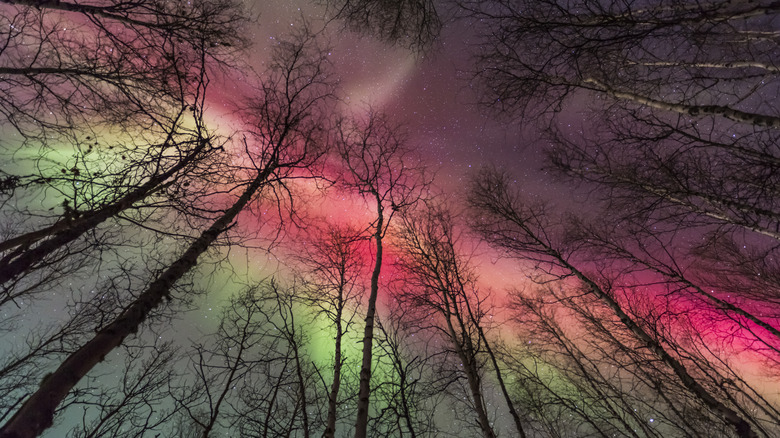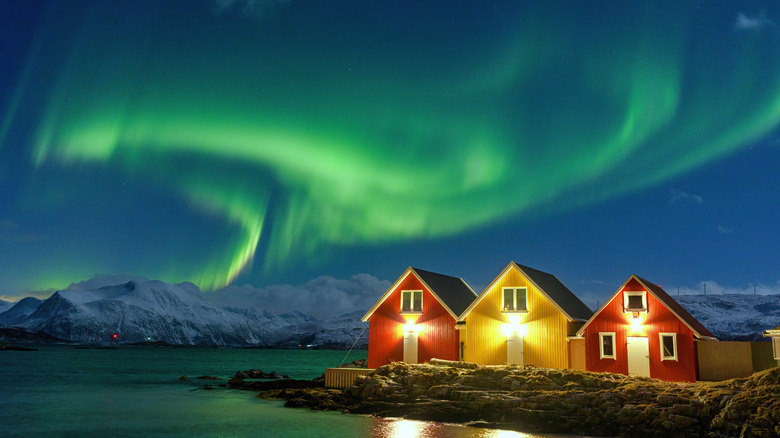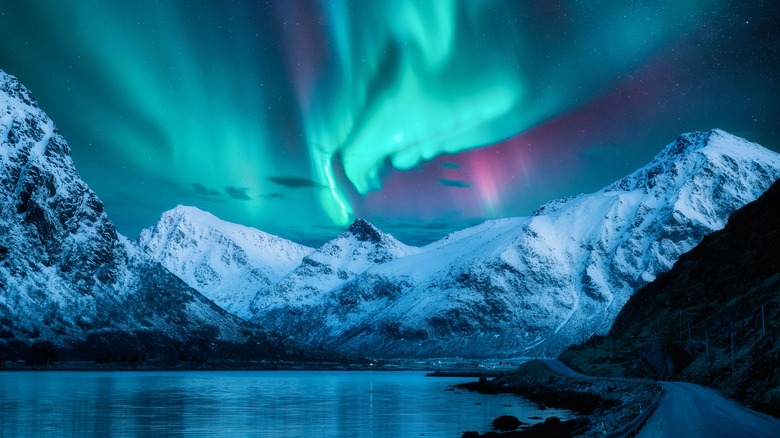Among the awe-inspiring spectacles of the night sky, there is little that can compete with the northern lights (or the southern lights on the other end of the world). Our earliest records of these lights, properly known as auroras, date back to the 10th century B.C. But for those of us in the present day, when is the best time to watch this cosmic light show? Once you’re as close to the poles as you can get, the spring and fall equinoxes are prime aurora-viewing periods.
Across numerous cultures, the northern lights (or aurora borealis) have been associated with the spiritual world. Many of the Inuit tribes in North America viewed the Aurora Borealis as the dead playing ball games in the sky, but for other groups, it was an evil omen to be feared. Further south, Native Americans associated the aurora with their creation myths, and over in northern Europe, the Sámi tribes believed the aurora was a manifestation of the deadlocked in eternal combat. While modern science has swept away these mystical explanations, allowing us to fully understand and even predict auroras, the appeal of watching them dance across the night sky has not diminished. So if you’re planning a trip to watch the northern lights, here’s the reason behind the best time to do so.
What causes the northern lights?

Our modern understanding of what causes auroras began in the 18th century when Swedish astronomer Anders Celsius – yes, that Celsius — discovered the connection between the aurora and the Earth’s magnetic field. We know now that the luminous phenomenon of the aurora borealis begins at the sun, which is constantly producing a stream of particles in all directions, known as the solar wind. Most of these subatomic particles, which are traveling at over one million miles per hour, are diverted around our planet thanks to its magnetosphere.
When our magnetic shield isn’t sufficient to protect us from the onslaught of the solar wind, these hypersonic particles are directed toward the polar regions of Earth, where they collide with gases in our atmosphere and send their atoms’ electrons into a higher energy state. When those gases cool down, they emit a photon of light, and when this happens on a large scale it can be seen from the surface of the Earth.
The colors produced by the aurora depend on which gases the solar wind interacts with and at what altitude. The most common color for the aurora is green, which is caused by oxygen at altitudes between 60 and 150 miles. Oxygen is also responsible for the rarer flashes of red in an aurora, but only when it is above 150 miles. Blues are caused by interactions with nitrogen below 60 miles.
When is the best time to see the northern lights?

The peak time of geomagnetic activity, and therefore when you’re most likely to see an aurora, is around the autumn or spring equinox. The reason behind this isn’t perfectly understood, but it has to do with the magnetic poles of the sun and Earth being lined up such that the particles of the solar wind are more easily directed to the Earth instead of around it.
The aurora is present on most nights in a ring around the poles, known as the auroral oval, although its shape fluctuates all the time. Therefore, the best place to see the aurora borealis is in the far north, specifically between 60 and 75 degrees north. That means you’ll have to go to either Alaska, Canada, Greenland, Iceland, Norway, Sweden, Finland, or Russia.
You also need to account for the seasonal variation in the length of a day. Because auroras aren’t visible during the day, you should plan your trip to see them after the autumnal equinox and before the vernal equinox when the nights are longer. Finally, pay attention to the space weather: NOAA maintains a web page with an aurora forecast that you can watch while you’re on your northern lights vacation, so you can keep warm as long as possible before braving the cold to see the lights.

